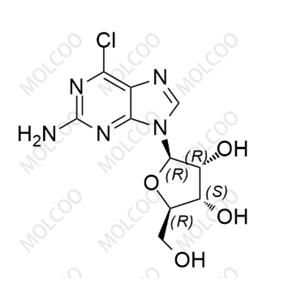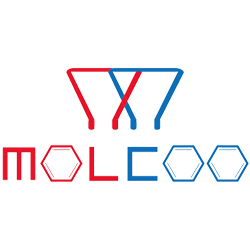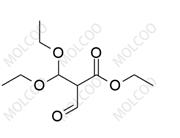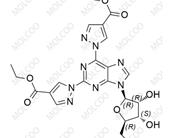Regadenoson Impurity;2004-07-1

WhatsAPP: +86 17386083646
E-mail: anna@molcoo.com
Product Code:R013030
English Name:Regadenoson Impurity 30
English Alias:(2R,3R,4S,5R)-2-(2-amino-6-chloro-9H-purin-9-yl)-5-(hydroxymethyl)tetrahydrofuran-3,4-diol
CAS No.:2004-07-1
Molecular Formula:C₁₀H₁₂ClN₅O₄
Molecular Weight:301.69
High-Purity Reference Standard:Confirmed by HPLC (≥99.0%), NMR (1H, 13C), HRMS, and elemental analysis, suitable for Regadenoson impurity analysis and quality control.
Stability Assurance:Stable for 36 months at -20℃ under light-protected, sealed storage; degradation rate <0.3% in methanol-water mixture within 6 months.
Quality Control Testing:Used for UPLC-MS/MS detection of Impurity 30 in Regadenoson API and formulations, controlling content to meet ICH Q3A standards (single impurity limit ≤0.1%).
Process Optimization Research:Monitors impurity formation during Regadenoson synthesis, reducing generation by >35% by adjusting amination temperature (e.g., 60-70℃) and pH.
Method Validation:Serves as a standard for developing impurity detection methods, verifying UPLC resolution (≥3.0) and LOD (0.01 ng/mL).
Regadenoson, a selective A2A adenosine receptor agonist, is used for myocardial perfusion imaging to diagnose coronary heart disease. Impurity 30, a process-related impurity in its synthesis, may originate from chlorination of purine rings or glycosylation side reactions. Its amino, chlorine, and polyol groups may affect drug water solubility, stability, and receptor binding. Strict impurity control for cardiovascular drugs is critical to medication safety, making research on this impurity essential for ensuring drug quality.
Detection Technology:UPLC-MS/MS with C18 column (1.7μm) and 0.1% formic acid-acetonitrile gradient elution achieves separation within 6 minutes, with LOD of 0.005 ng/mL for trace impurity analysis.
Formation Mechanism:Formed by nucleophilic substitution of 2,6-dichloropurine with glycosyl compounds in ammonia solution; optimizing reaction temperature and ammonia concentration inhibits side reactions.
Safety Evaluation:In vitro cytotoxicity shows IC₅₀ of 178.5 μM against H9c2 cardiac cells (Regadenoson IC₅₀=8.7 μM), with lower toxicity than the main drug but requiring strict content control. Long-term stability testing is ongoing to monitor degradation under high temperature (40℃) and high humidity (75%RH) conditions.
NOTE!
We can also customize related analogues and modified peptides including HPLC, MS, 1H-NMR, MS, HPLC, IR, UV, COA, MSDS.
This product is intended for laboratory use only!
WhatsAPP: +86 17386083646
E-mail: anna@molcoo.com
NEW IN STOCK!
The Molcoo Laboratory added drug impurity reference standards, including Baricitinib, Piperazine, Benzylpenicillin, Tranilast and multiple N-Nitroso drug impurities! Now available for immediate delivery!






 China
China


